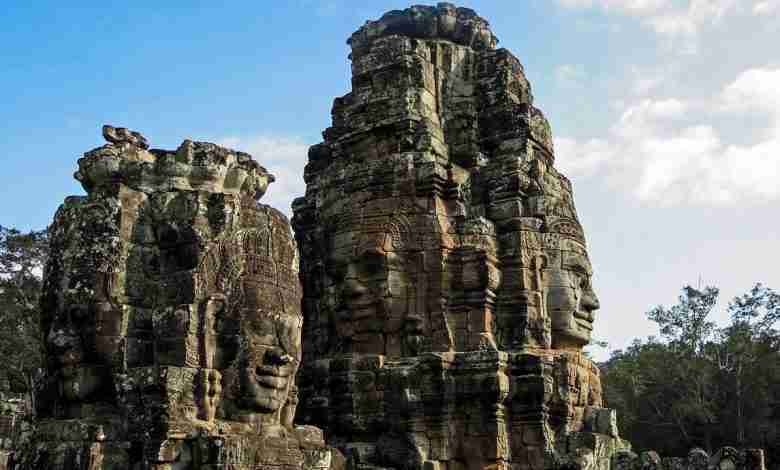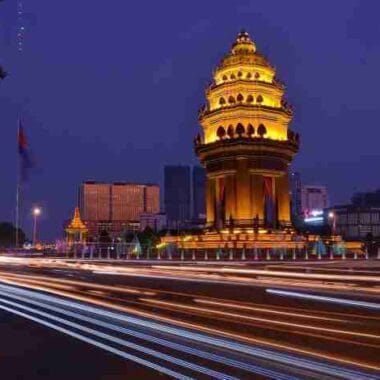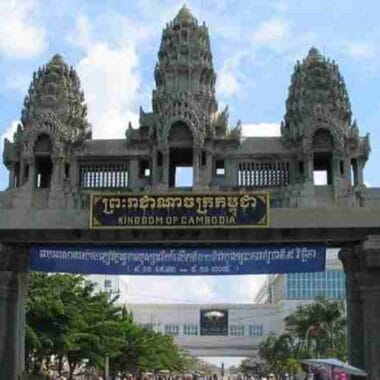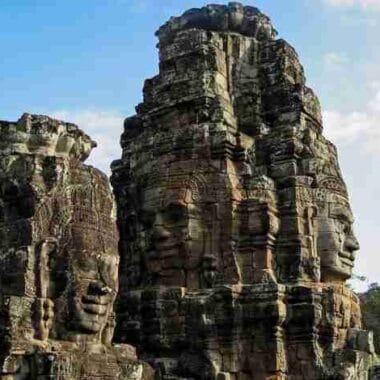The Bayon Temple is one of the famous, attractive, beautiful and popular tourist site in the Angkor Wat Archaeological Park. For the first time visitor to the temple will feel stunned. It is like nothing else in the land anywhere in the world. Bayon Temple known as Angkor Thom in Khmer is located in the center of the Great Khmer City in Ancient World.
The Bayon is best known for the mysterious faces on its many towers with gently smiling faces on each side. There are 54 towers and all the towers are decorated with 216 smiling faces, and it is adorned with 1.2km of extraordinary bas-reliefs incorporating more than 11,000 figures.
There are some debate over the faces around Bayon Temple who they actually represent. Some scholars think that they are King Jayavarman VII while other theories suggest that they are the face of a Bodhisattva or a combination of Buddha and Jayavarman.
Background of Bayon Temple
The Bayon temple was built in late 12th century by the King Jayavarman VII, dedicated to Buddhist. The Bayon temple was built as a Buddhist temple and the last state temple to be build at Angkor. It was the only temple to be built primarily as a Mahayana Buddhist shrine dedicated to the Buddha. A statue of seated Buddha shelter under the hood of the snake Mucalinda was discovered under the ground at the main shrine.
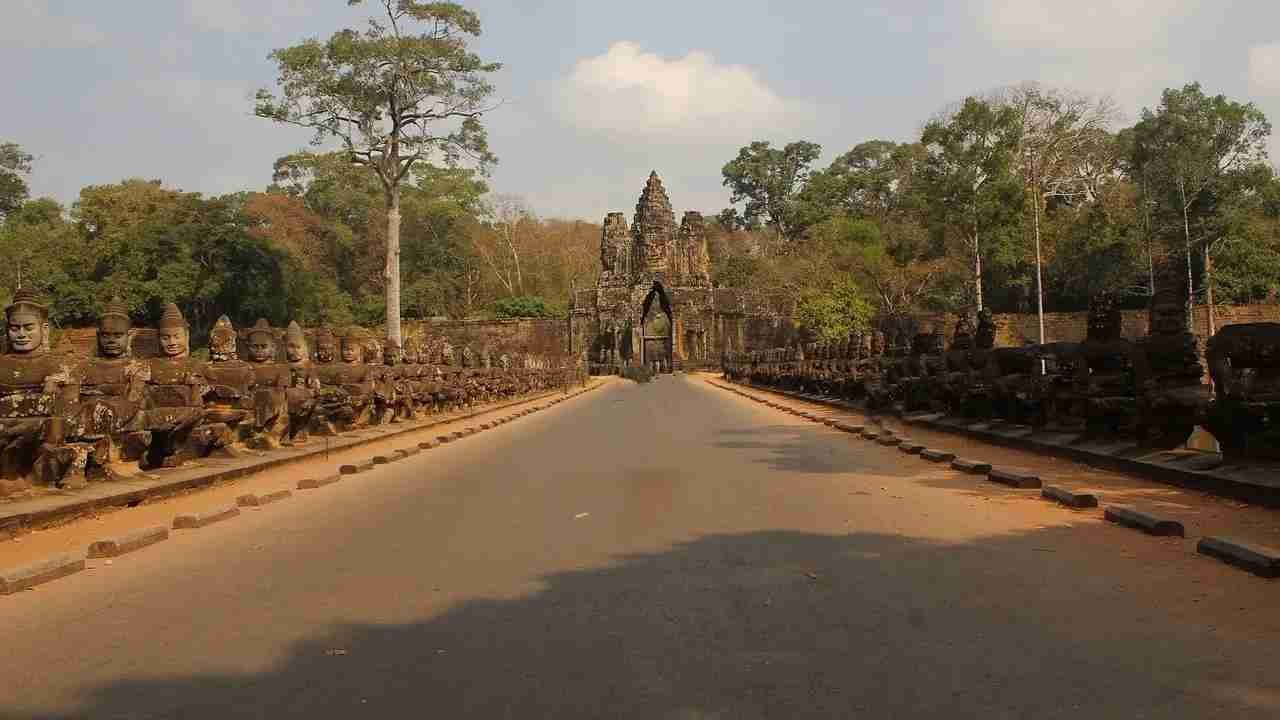
Although the Bayon was a Buddhist temple, a great number of minor and local deities were also worshipped. Separate shrines were dedicated to Vishnu and Shiva.
After the death of King Jayavarman VII, the temple was turned into a Hindu temple when King Jayavarman VIII reverted the official Khmer religion back to Hinduism. A few decade later, the Bayon has suffered numerous additions and alterations that include the terrace to the east of the temple, the libraries, the square corners of the inner gallery, and parts of the upper terrace which is not part of the original plan.
The Bayon temple is oriented towards the east, and it sits at the exact center of Angkor Thom, roads lead to it directly from the gates at each of the city. The temple itself has no wall or moats, these being replaced by those of the city itself. The Bayon city have an area of 9 square kilometers which much bigger than Angkor Wat only have an area of 2 square kilometers.
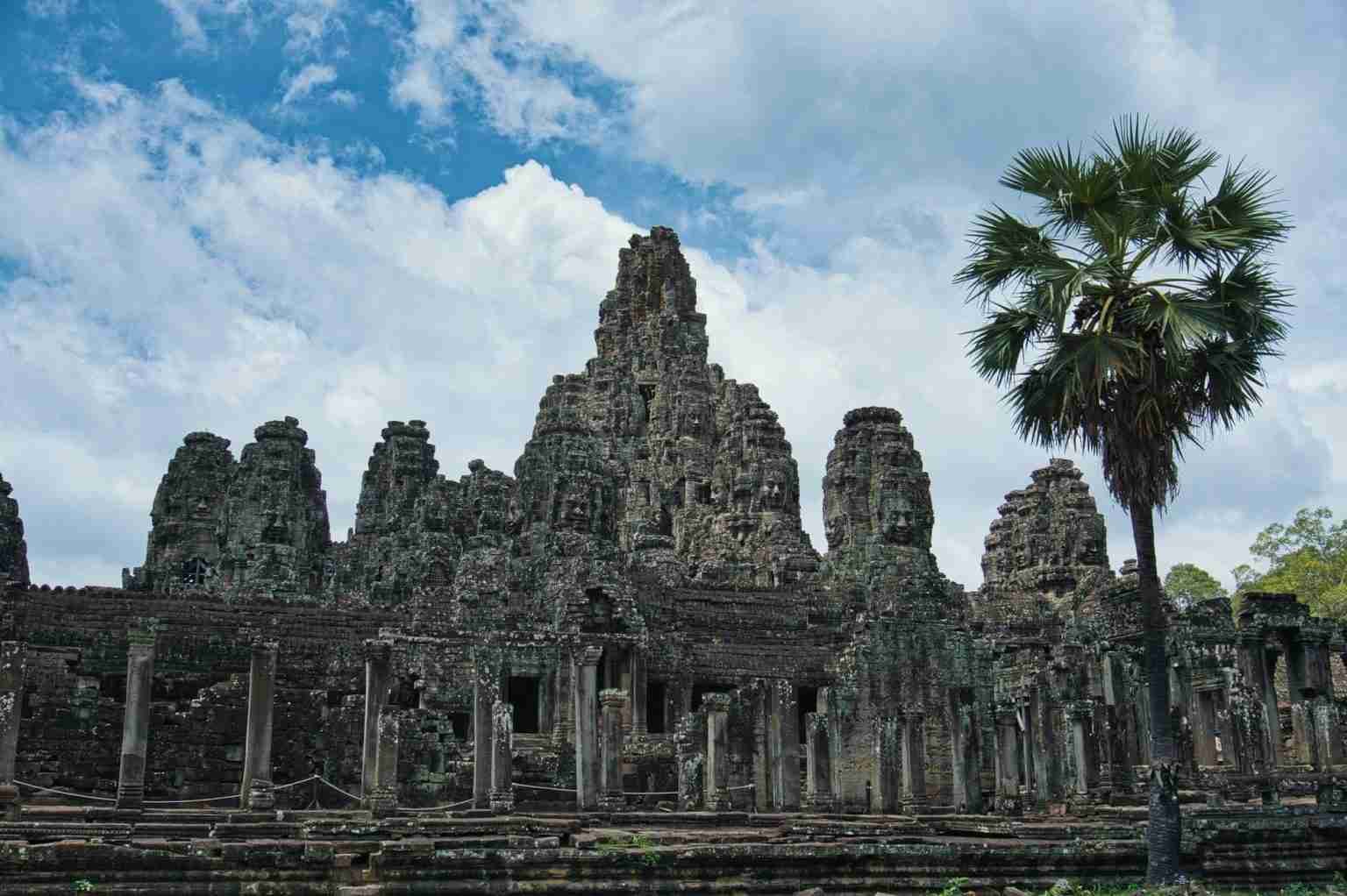
The Bayon temple has two galleries enclosures, the third and second enclosures. Unlike Angkor Wat, which impresses with the grand scale of its architecture and much more open spaces, the Bayon temple are crowded against each other with little space between.
Jayagiri is the original name for the Bayon Temple, it means Victory Mountain. It was later named Bayan Temple by French, during French occupancy, due to its religious significance and Buddhist imagery. When the local Khmer came to work at renovating Banyan Temple, there was a mispronunciation in Banyan, which was pronounced Bayon. The name then stuck, for local people the Bayon temple also known as Angkor Thom.
Exploring Bayon Temple
Due to its tight little space, exploring Bayon Temple can be quite tough as the tour involves lots of narrow corridors, steep flights of stairs and towers. It takes about 1 hour to explore all of it and it can get a little crowded, though the ruins are big enough that you can always find some space and quiet to enjoy your tours.
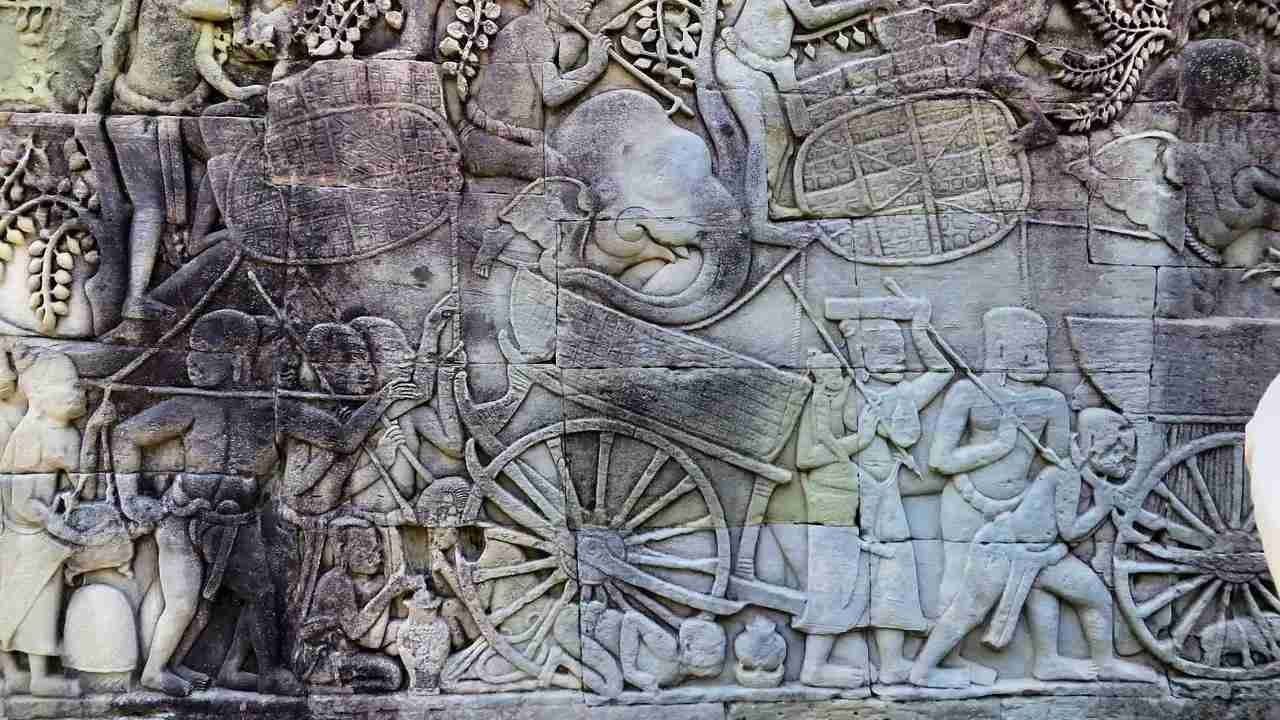
Bayon Temple has interesting and extensive carvings of scenes from everyday life, including market scenes, religious rituals, cockfighting, chess games and childbirth on its bas-reliefs are outstanding. At the southern wall are of scenes from a sea battle between the Khmer and the Cham, elephants, war machines such as a large crossbow and a catapult.
The upper terrace is home to the famous “face towers” of the Bayon Temple, each of which supports two, three or most commonly four gigantic smiling faces. The number of towers have not remained constant over time, as towers have been added through construction. At one point, the temple was host to 49 such towers; now only 37 remain. The number of faces is approximately 200, some are only partially preserved.
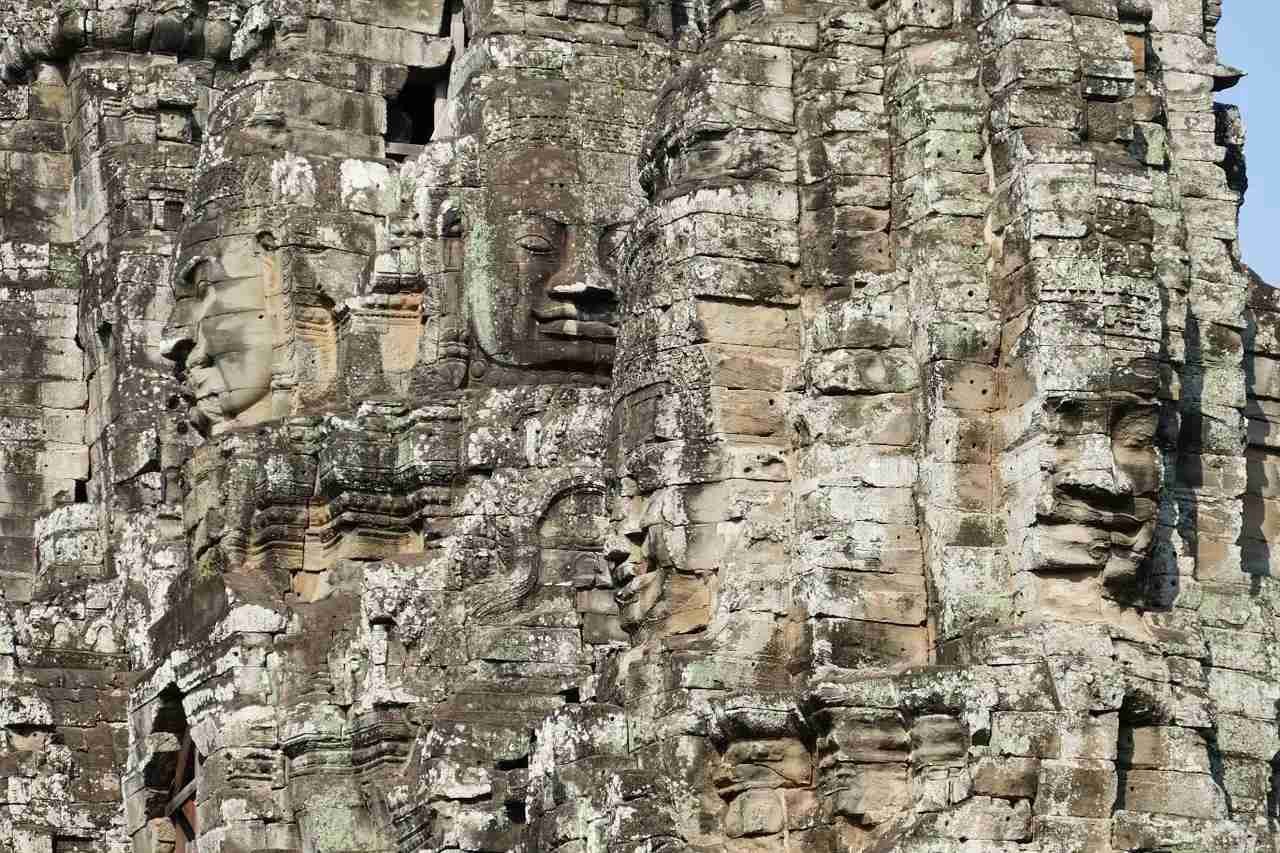
The central tower of the Bayon Temple rises 43 metres above the ground. At the time of the Jayavarman VII, there was a statue of the Buddha, 3.6 m tall, located in the sanctuary at the heart of the central tower. During the reign of Hindu king Jayavarman VIII, the figure was removed from the sanctuary and smashed to pieces. After being recovered in 1933 from the bottom of a well, it was pieced back together, and is now on display in a small pavilion at Angkor.
